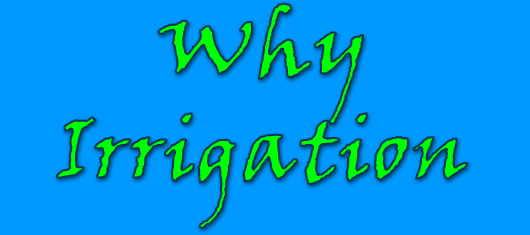
In the North Otago region throughout the 1970's to the 1990's, there were several droughts. They were so severe that it turned hectares of farm land into paddocks of dust. Throughout the drought, farmers were having to sell most of their sheep, cows and deer to be able to get enough money to buy food. Some people just killed their stock as the money that the freezing works were paying them just wasn't enough to cover transport costs etc.
One of the main reasons why people chose to take on irrigation in North Otago, was to avoid being affected by droughts in the future. Irrigation allows them to have more consistent grass growth and therefore they are able to feed stock, rather than stock suffering from dehydration and lack of food during times of drought.
DID YOU KNOW?:
Definition:
Irrigation is where you have a special piece of equipment that is connected by pipes or canals that supply it with water to put on the land.
On a hot summers day, the ground loses 5mm of moisture to evaporation. When the roots can't reach moisture, the grass turns brown. For example in the summer we sometimes have a week or two without rain, so we are losing between 3.5cm to 7cm of moisture from under the ground.
Farmers irrigate so that the grass grows and the animals that eat it can get fat. When the animals are fat enough, the farmers sell them and the farmer gets money to live on. Irrigation is also used on crops such as clover, peas, vegetables and much more. The main use of irrigation is to make grass grow. If you are able to make grass, you are able to make money.
© 2007 – Page created by: Laura, Tara and James


